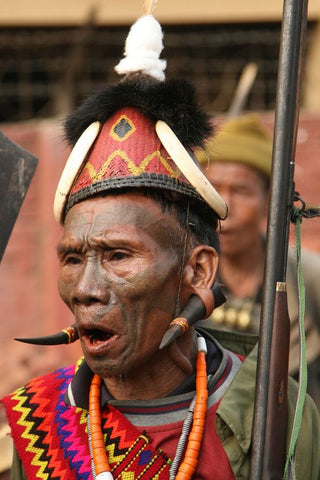Nagaland jewelry serves as a captivating window into the cultural fabric of this vibrant Indian state. Its unique designs, intricate craftsmanship, and deep cultural symbolism make it an essential part of Nagaland’s heritage.
Nagaland jewelry is a testament to the region’s rich cultural tapestry. In this blog, we will delve into the captivating world of Nagaland jewelry, exploring its significance, materials used, popular designs, and the artistry behind its creation.
1. Cultural Significance:
Nagaland jewelry holds immense cultural significance for the indigenous communities of the state. It plays an integral role in their ceremonies, rituals, and daily lives. Each piece of jewelry carries symbolism that represents aspects like social status, marital status, tribal affiliations, and spiritual beliefs. By adorning themselves with these exquisite ornaments, the Naga people celebrate their cultural heritage and express their identity.
2. Traditional Materials:
Nagaland jewelry incorporates a diverse range of materials sourced from nature. One of the most commonly used materials is beads made from materials like bone, shells, seeds, and glass. Metals such as brass, silver, and gold are also utilized in crafting intricate pieces. Natural materials like wood, feathers, and animal bones are often incorporated to add unique textures and elements to the jewelry.


naga women (r) women wearing naga konyak tribe necklace (l) . picture credits: pinterest
3. Popular Jewelry Designs:
Nagaland jewelry is characterized by its intricate designs and distinctive motifs. Each tribe in Nagaland has its distinct style and design patterns. Some of the popular designs include necklaces, earrings, bracelets, and headgears. The jewelry is often adorned with geometric patterns, animal motifs, floral elements, and traditional symbols, reflecting the Naga people’s deep connection with nature
4. Artistry and Craftsmanship:
The creation of Nagaland jewelry is a labor-intensive process that involves skilled artisans. The craftsmen employ various techniques like wirework, filigree, engraving, and etching to bring intricate designs to life. The jewelry-making process combines traditional methods passed down through generations with contemporary influences, resulting in stunning pieces that blend history with modern aesthetics.
5. Preservation and Revival:
In recent years, there has been a growing interest in preserving and promoting Nagaland’s traditional jewelry artistry. Efforts are being made to revitalize the craft, empower local artisans, and create sustainable livelihoods. Artisans are encouraged to pass on their skills and knowledge to younger generations, ensuring the continuity of this invaluable cultural heritage.

konyak men jewelry. photo credits: pinterest

